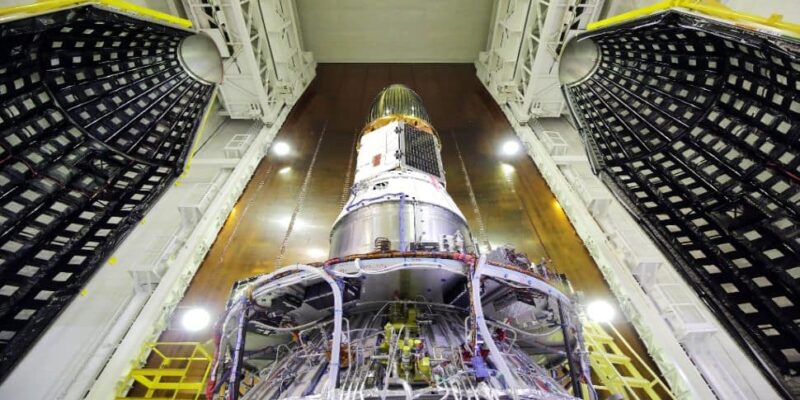New Delhi: The Indian Space Research Organisation (ISRO) faced a rare setback in the early hours of May 18 as its highly anticipated PSLV-C61 mission, the 63rd flight of the Polar Satellite Launch Vehicle (PSLV), failed to deliver its payload – the EOS-9 satellite – into orbit.
The mission took off at 5:59 am from the Satish Dhawan Space Centre in Sriharikota. Initial signs were promising. The rocket cleared the first and second stages of flight successfully – the early benchmarks of any PSLV launch. However, it was during the third stage that a sudden drop in chamber pressure led to an anomaly, effectively ending the mission before the satellite could be placed into its intended orbit.
The third stage of the PSLV uses a solid rocket motor, which provides high thrust once the vehicle has exited the dense layers of the atmosphere. In this flight, although ignition occurred as expected, sensors recorded a drop in pressure within the chamber – indicating a failure in the propulsion process.
ISRO Chairman V. Narayanan confirmed the technical anomaly and stated that a detailed analysis was already underway.
This launch was significant as the PSLV has been a workhorse for ISRO – known for its reliability, having successfully delivered missions like Chandrayaan-1 and Mangalyaan. The failure marks a rare blemish in its otherwise solid track record. It was also ISRO’s 101st mission from Sriharikota.
Now, both an internal Failure Analysis Committee and an external government-appointed review body are expected to investigate the root cause. These panels typically deliver a comprehensive assessment within weeks, which then guides corrective action for future missions.
The payload – Earth Observation Satellite 9 (EOS-9) – was designed for continuous surveillance, including border monitoring, disaster response, urban planning and agricultural management. Of particular importance was its Synthetic Aperture Radar (SAR), enabling day-and-night, all-weather imaging – a key asset for national security and civil planning.
The failed deployment of EOS-9 means a temporary gap in ISRO’s remote sensing capabilities. While other satellites, such as Cartosats and radar platforms, remain operational, the unique capabilities of EOS-9 will now be missed. Its replacement, once commissioned, could take years to be developed and launched.
The mission had also integrated space sustainability into its design. EOS-9 was equipped with extra fuel to perform a planned de-orbit maneuver at the end of its lifecycle, ensuring it would not contribute to space debris – a growing global concern.
Despite the setback, ISRO’s long-term record and response mechanisms reflect a strong system built on transparency and technical rigor.
Stay informed on all the latest news, real-time breaking news updates, and follow all the important headlines in india news and world News on Zee News.




